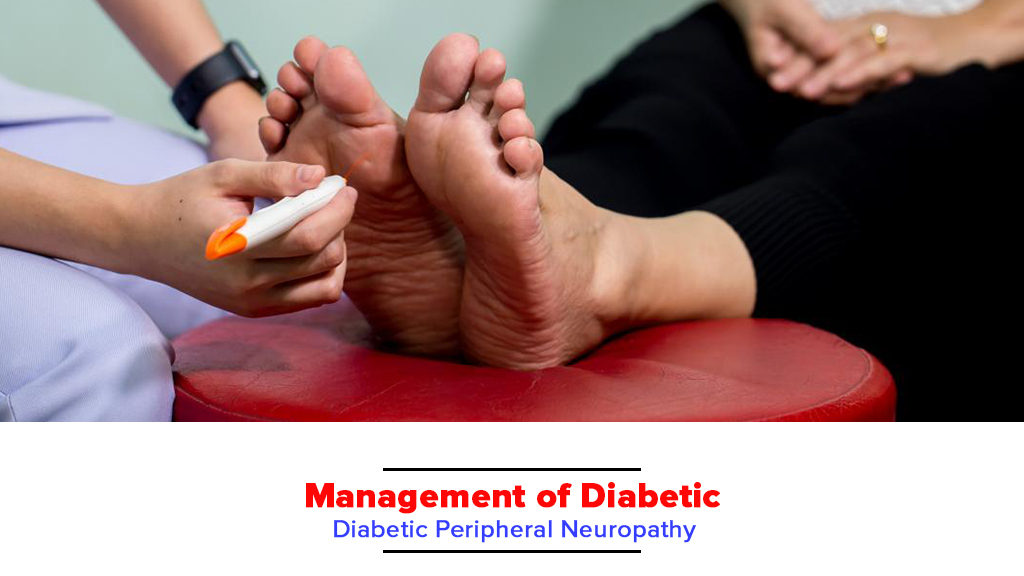
About 70 to 80% of diabetic patients experience nerve damages that result due to high blood sugar levels. If neglected for years, it can lead to amputations and even death.
One type of diabetic nerve damage is called peripheral neuropathy. If you or your loved one is suffering from this illness and is experiencing numbness or tingling sensations in the legs, feet, and hands then it’s time to understand how to correctly manage diabetic peripheral neuropathy.
Let’s understand why diabetes causes peripheral neuropathy and how to manage this condition to live a normal life.
So, let’s dive in.
Diabetes causes high blood sugar levels and this messes up your entire body. One of the effects of high blood sugar levels is nerve damage. This nerve damage occurs in more diabetic patients than you think.
Diabetic peripheral neuropathy is developed through the years. Sometimes the early symptoms aren’t noticeable and this results in a condition that cannot be improved with any treatment possible.
That’s why it’s important to know about the early symptoms of diabetic peripheral neuropathy and get proper care and treatment to stop this progressive condition.
Unfortunately no.
But with proper care and treatment, you can surely minimize the symptoms and control the nerve damage from worsening.
You should always check your feet and your body for ulcers as peripheral neuropathy progresses very slowly and usually goes unnoticeable. You might not notice the numbness. So if you get a wound on your foot, you might not even know that. So daily assessment of your body is vital.
Alongside don’t ignore:
There is unfortunately NO treatment that will stop peripheral neuropathy altogether. But you’ll be guided with a few remedies and treatments that will help you manage the symptoms.
The treatment will be directed by your doctor according to your symptoms and the severity of diabetes. You should always follow your doctor’s prescribed medicines to make sure you keep your blood sugar levels in an optimum range.
The key is to maintain normal blood sugar levels. And this is what your doctor will do to prevent the progression of peripheral neuropathy.
READ ALSO: Common Myths about DIabetes and it’s Treatments
Few studies have proved the effectiveness of laser therapy in patients suffering from DPN. Although the mechanism is unknown, the laser beam is believed to improve blood supply to legs and feet, resulting in a decrease in the DPN symptoms.
In fact, studies have shown a whopping 80% success rate in the treatment of diabetic peripheral neuropathy through non-invasive low-level laser therapy (LLLT).
This laser treatment is done worldwide by experienced doctors who use handheld laser devices that produce safe laser lights. The treatment is split into various sessions depending upon the severity of the case.
How does laser therapy work?
Although the course of action and mechanism is unknown, the science behind laser therapy is that laser light penetrates the skin, producing warmth and stimulating natural healing mechanisms in the body.
In the case of laser therapy for neuropathy, the laser beam allows blood to flow in the affected region, increasing oxygen and nutrient supply in that region. In this way, the affected nerve starts to get blood supply and the symptoms start to disappear.
If you’re in Pakistan then head over to BioFlex Pakistan. We’re an advanced pain management clinic where highly qualified rheumatologists perform this treatment successfully.
Book a consultation today for peripheral neuropathy treatment.
Fill in the booking form or
Call: 𝟬𝟴𝟬𝟬 𝗟𝗔𝗦𝗘𝗥, 051-2315014, 051 2315016.
The management of diabetic peripheral neuropathy is possible through proper care and treatment. You should follow your doctor’s advice along with a few home remedies (mentioned above) and laser pain therapy that’s both; safe and effective.
Share
Book Your Appointment
